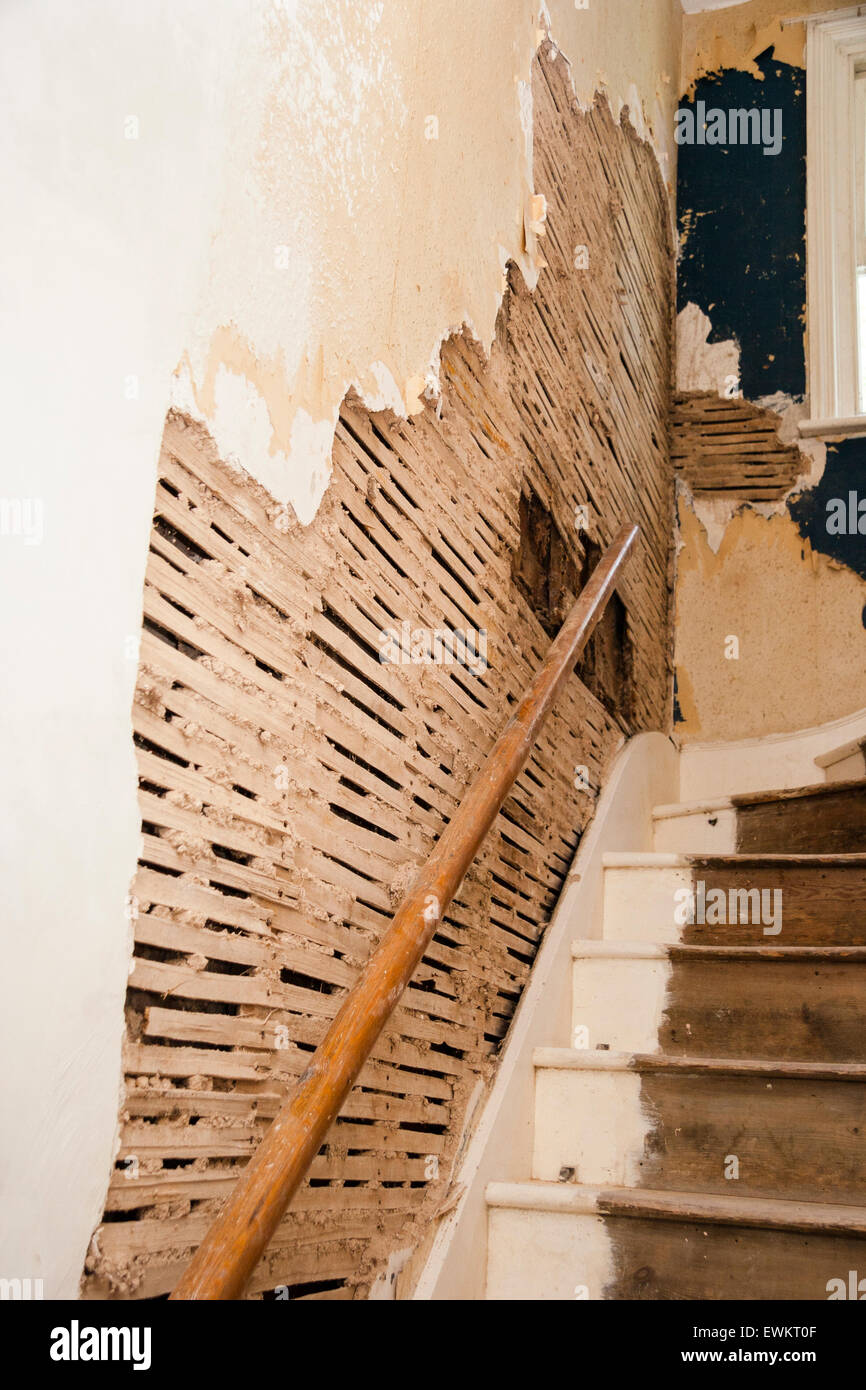

Builders began switching from lath and plaster construction to drywall in the mid-1940s. You can also use the age of your home as a good way to figure out what your walls are made of. Try the pushpin test-plaster is too hard to to press a pushpin into by hand, but drywall is softer.Look for cracks in your wall-plaster forms spiderweb cracks as it ages, drywall does not.Check an attic area that may have unfinished walls.


Plaster is made from gypsum mixed with wood pulp and other thickening agents.Laths are nailed like fence boards, spanning the distance between wall studs.Lath and plaster walls are made of plaster spread of metal lath or wooden lath.Looking at a lath wall without any plaster is a bit like looking at a fence where the laths are the fence boards and the wall studs are the fence posts. There is typically a ⅜–½-inch gap between each lath. They are nailed so that they span the space between bare wall studs. Laths are thin strips of wood, only about ¼-inch (6 mm) thick and 1 inch (2.5 cm) wide. The laths in lath and plaster are typically made from wood, although metal laths have been produced. When Did They Stop Using Lath and Plaster?.What are the Downsides of Lath and Plaster?.What are the Benefits of Lath and Plaster?.Does Anyone Still Use Lath and Plaster?.How Do You Know if Your Wall is Lath and Plaster?.


 0 kommentar(er)
0 kommentar(er)
